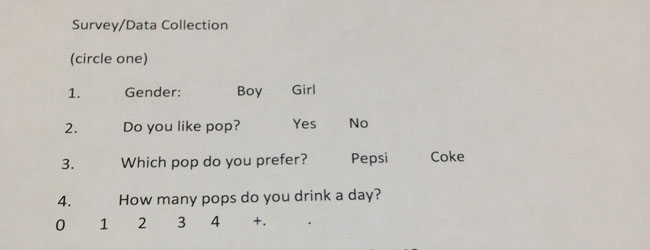At Dow High, there is a wide variety of math classes offered from trig to financial math. One of these many math classes is stats which teaches students how to predict probability for events and information such as ratios and how to put information into graphs. It also teaches students how to use different formulas to make different claims, which are found out to be true or false later. For the end of the year, the students who are in the class had to create a final project involving surveys and gathering information.
“The stats project was a way to take all of the information that we learned throughout the semester and combine it into one project,” senior Marie Benner said.
The questions that needed to be on the surveys were used to try and find out if a hypothesis stated beforehand was true or not. The student’s goal was to write questions that would give the proper information needed to help prove or disprove their hypothesis.
“I did my project on musical instruments so I found data about things like how many people play a musical instrument and how playing a musical instrument affects your GPA,” Benner said.
The variety of the projects could be on whatever the students wanted as long as it fit the criteria for the project. Seniors Christine Mialki and Larissa decided to do their project on music genres and relationship statuses.
“A lot of people as about GPA’s, grade, gender, etc, and then ask more specific questions like the type of music you listen to, how often you drink pop, etc.” senior Christine Mialki said. “Then they use the data that they get to test 4 claims that they made, like if people with a 3.5+ GPA tend to drink more pop, for example.”
After the students sent out their surveys, they had to count up the information gathered and find out if their information and thesis were conclusive.
“Even though none of our claims were conclusive, it was a good real-world learning experience, since this is actually how people test and analyze data to come up with “percent of people…” and “three in every five people.” facts,” Mialki said.



